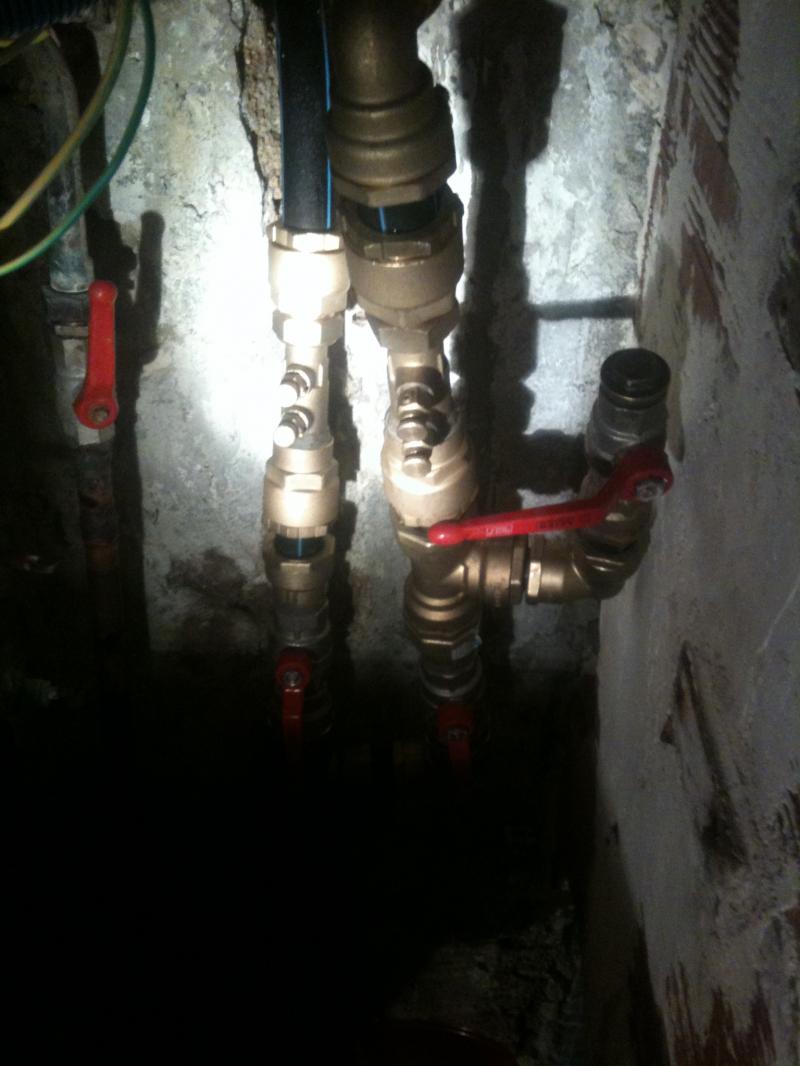- Joined
- 29 Sep 2011
- Messages
- 13
- Reaction score
- 0
- Country

We have just installed a new mains water pipe to our house, as we have been on well water up to now and it's run dry(ish)!.
The run is 300m, and we have used 40mm PE pipe.
Upon connection at the house we measured 5 bar, far more than I was expecting, so we installed a PRV up at the road, just after the meter (the pipe is in 25mm for a short way here).
Unfortunately, the pressure guage failed after this, probably due to dirt getting into it, so are unsure of pressure at house now. The PRV is preset to 3 bar, and we didn't touch that.
So the question is, will we be getting 3 bar at the house, or less?
If I understand correctly, although there are losses in the 300m pipe run, we should still have 3 bar at the house, as the PRV auto compensates for pressure drop to maintain the 3 bar.
If we had 3 bar supply from the street, no PRV, I suppose we would get about 2, 2.5bar at the house.
But with about 6 bar at the street, and the PRV, in theory, do we get 3 bar at the house?!
Thanks for any help!
The run is 300m, and we have used 40mm PE pipe.
Upon connection at the house we measured 5 bar, far more than I was expecting, so we installed a PRV up at the road, just after the meter (the pipe is in 25mm for a short way here).
Unfortunately, the pressure guage failed after this, probably due to dirt getting into it, so are unsure of pressure at house now. The PRV is preset to 3 bar, and we didn't touch that.
So the question is, will we be getting 3 bar at the house, or less?
If I understand correctly, although there are losses in the 300m pipe run, we should still have 3 bar at the house, as the PRV auto compensates for pressure drop to maintain the 3 bar.
If we had 3 bar supply from the street, no PRV, I suppose we would get about 2, 2.5bar at the house.
But with about 6 bar at the street, and the PRV, in theory, do we get 3 bar at the house?!
Thanks for any help!


